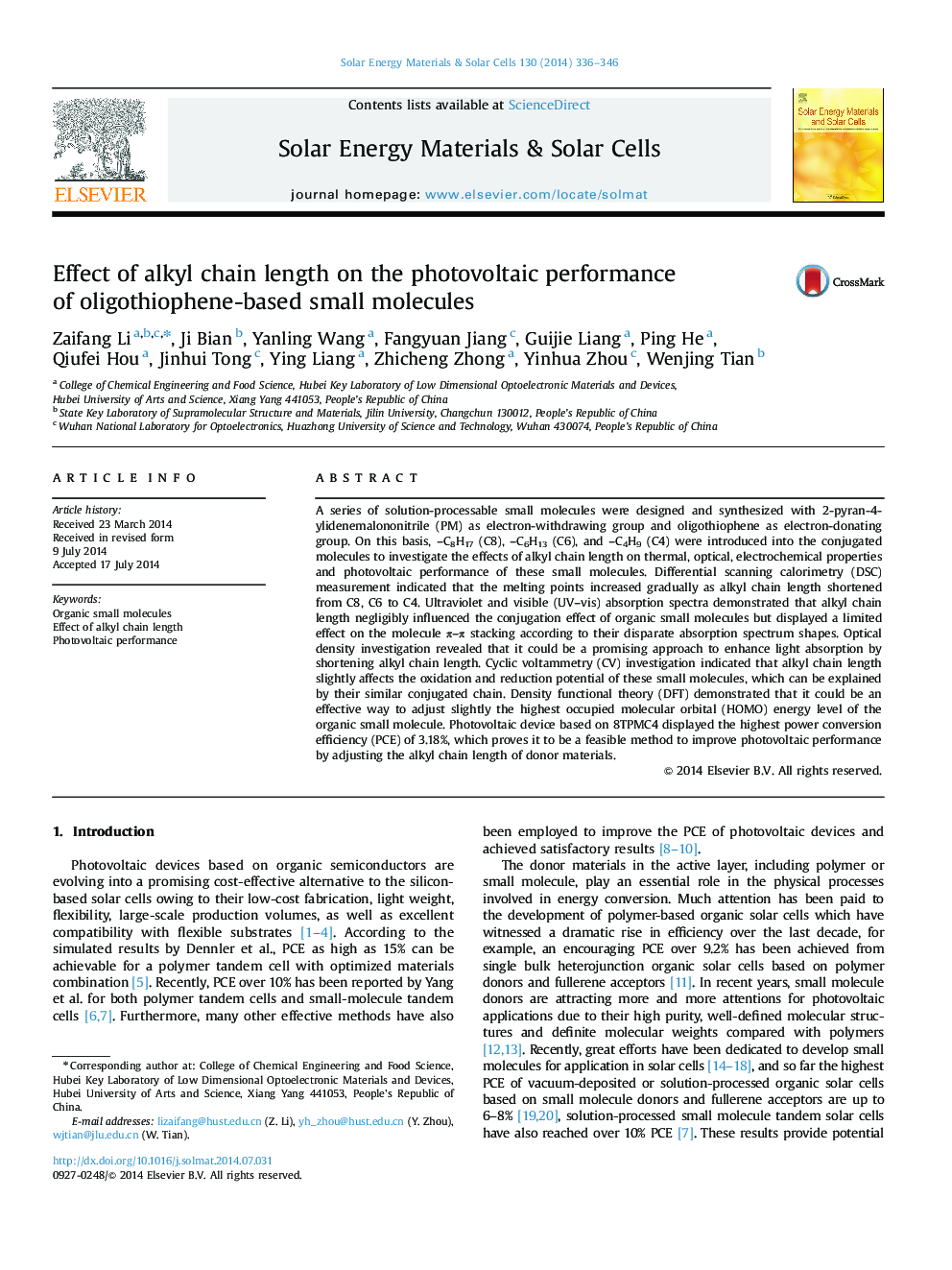| Article ID | Journal | Published Year | Pages | File Type |
|---|---|---|---|---|
| 6535579 | Solar Energy Materials and Solar Cells | 2014 | 11 Pages |
Abstract
A series of solution-processable small molecules were designed and synthesized with 2-pyran-4-ylidenemalononitrile (PM) as electron-withdrawing group and oligothiophene as electron-donating group. On this basis, -C8H17 (C8), -C6H13 (C6), and -C4H9 (C4) were introduced into the conjugated molecules to investigate the effects of alkyl chain length on thermal, optical, electrochemical properties and photovoltaic performance of these small molecules. Differential scanning calorimetry (DSC) measurement indicated that the melting points increased gradually as alkyl chain length shortened from C8, C6 to C4. Ultraviolet and visible (UV-vis) absorption spectra demonstrated that alkyl chain length negligibly influenced the conjugation effect of organic small molecules but displayed a limited effect on the molecule Ï-Ï stacking according to their disparate absorption spectrum shapes. Optical density investigation revealed that it could be a promising approach to enhance light absorption by shortening alkyl chain length. Cyclic voltammetry (CV) investigation indicated that alkyl chain length slightly affects the oxidation and reduction potential of these small molecules, which can be explained by their similar conjugated chain. Density functional theory (DFT) demonstrated that it could be an effective way to adjust slightly the highest occupied molecular orbital (HOMO) energy level of the organic small molecule. Photovoltaic device based on 8TPMC4 displayed the highest power conversion efficiency (PCE) of 3.18%, which proves it to be a feasible method to improve photovoltaic performance by adjusting the alkyl chain length of donor materials.
Keywords
Related Topics
Physical Sciences and Engineering
Chemical Engineering
Catalysis
Authors
Zaifang Li, Ji Bian, Yanling Wang, Fangyuan Jiang, Guijie Liang, Ping He, Qiufei Hou, Jinhui Tong, Ying Liang, Zhicheng Zhong, Yinhua Zhou, Wenjing Tian,
